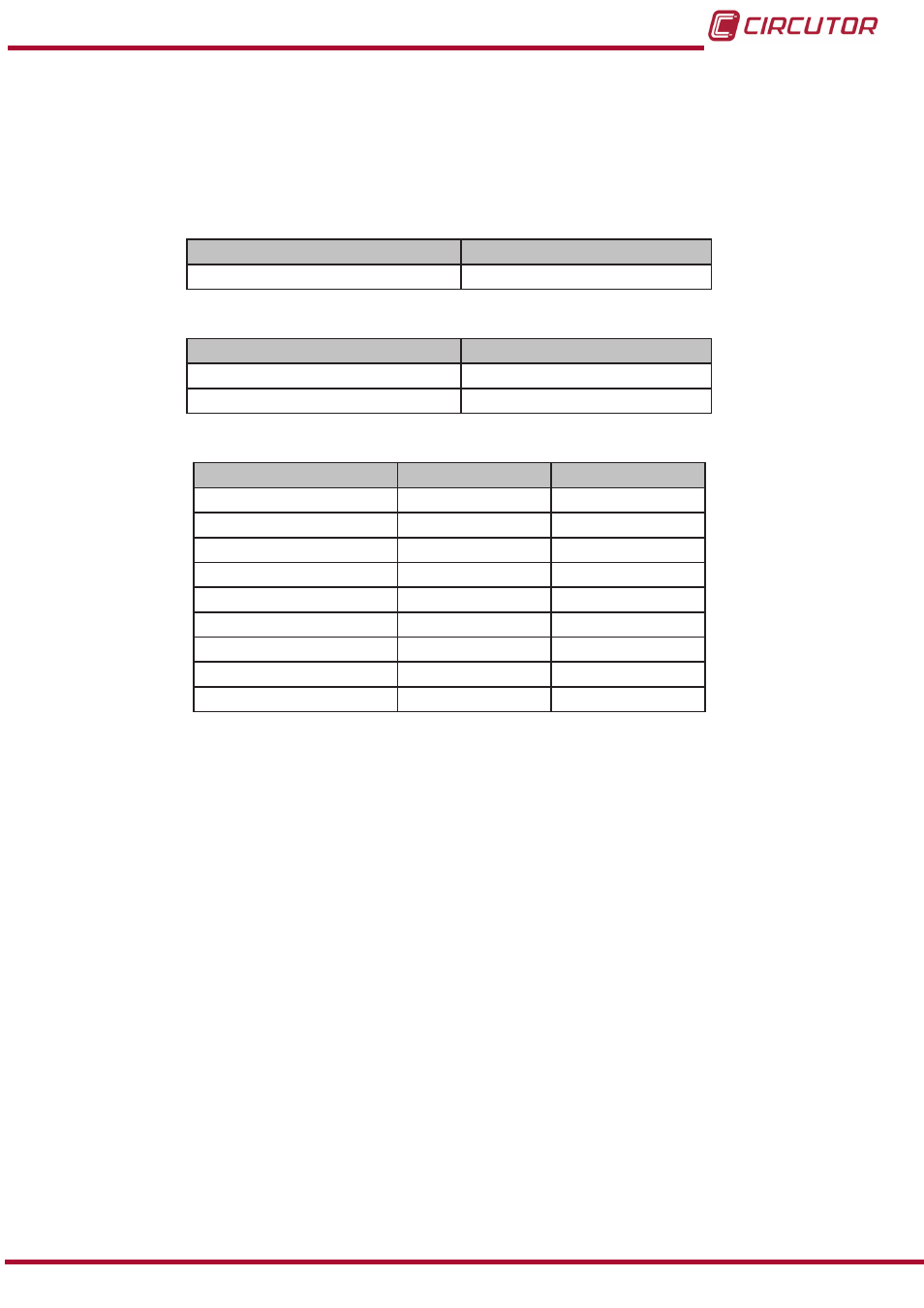Key points for inspecting contactors, Tightening torque of the electrical connections – CIRCUTOR OPTIM P&P Series User Manual
Page 19

5.2.2. TIGHTENING TORQUE OF THE ELECTRICAL CONNECTIONS
The connections must be tight.
The tightening torques for the fuse bases, circuit breakers and the contactors are indicated in
Table 2:Tightening torques of the cables to the fuse bases.
Fuse base
Torque (Nm)
NH-00
15.2
Table 3:Torques of power cables to two-pole and three-pole circuit breakers.
Circuit breaker
Torque (Nm)
In ≤ 3 x 63 A
2
In ≤ 2 x 6 A
2
Table 4:Torques of cables to connector terminals
Model
Auxiliary (Nm)
Power (Nm)
CMC-12
1.3
1.6
CMC-18
1.3
2.2
CMC-32
1.3
2.9
CMC-40
1.3
2.9
CMC-50
1.3
4.5
CMC-65
1.3
4.5
CMC-75
1.3
4.5
CMC-85
1.3
5.1
CMC-150
1.3
9
5.2.3. KEY POINTS FOR INSPECTING CONTACTORS
Check that the plastic parts are not blackened and do not show signs of burning or hardening.
Check that the head is properly inserted.
Check the tightness of cables and terminals, as shown in
The terminals must be clean.
If the capacitor bank includes RD discharge resistors, check they are in good condition (that
they are not open or show signs of burning). (
19
Instruction Manual
OPTIM P&P Series
